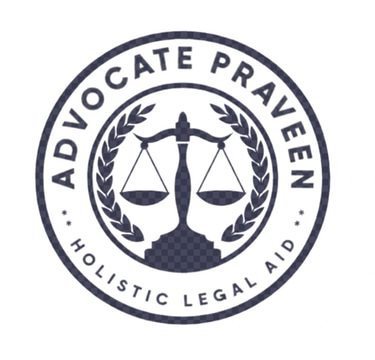Supreme Court: Cheating Charge Needs Proof of Inducement, Not Just Forged Documents
LEGAL UPDATES
The Supreme Court in Jupally Lakshmikantha Reddy v. State of Andhra Pradesh1 clarified the scope of Section 420 of the Indian Penal Code, 1860 (“IPC”), holding that the use of a forged document, absent material inducement or wrongful gain/loss, does not constitute “cheating.” The judgment, delivered by B.V. Nagarathna and Joymalya Bagchi, JJ., emphasizes the need for a direct nexus between the alleged false representation and the conferment of material benefit before criminal liability under Section 420 can arise.
This case is significant as it distinguishes between the existence of a forged document and its actual impact on inducing action, reiterating that mere deception without dishonest inducement is insufficient.
II. Factual Background
The appellant’s society, JVRR Education Society, had been running an educational institution in Kurnool since 2016. A complaint alleged that the society secured recognition from the School Education Department by submitting a forged fire no-objection certificate (“NOC”). The NOC was purportedly issued by the Assistant District Fire Officer, but investigations revealed otherwise.
The police registered an FIR in 2018 under Sections 420, 465, 468, and 471 IPC, culminating in a charge-sheet under Section 420 IPC.
However, as per the National Building Code of India, 2016, educational buildings below 15 metres in height were not required to obtain a fire NOC. The appellant’s building measured 14.20 metres. In fact, the High Court, in earlier writ proceedings,had directed the Education Department to renew the society’s affiliation without insisting on such NOCs.
III. Procedural History
The Andhra Pradesh High Court refused to quash the criminal proceedings at the threshold, holding that whether the institution required an NOC could not be decided prematurely. Aggrieved, the appellant approached the Supreme Court.
IV. Submissions
A. Appellant’s Contentions
No fire NOC was legally required; thus, any alleged false submission could not have induced the Department to confer recognition.
The criminal case was a counterblast to contempt proceedings initiated against the Education and Fire Departments for non-compliance with writ directions.
No evidence existed to connect the appellant with fabrication of the alleged forged document.
B. Respondents’ Contentions
The State argued that:
The appellant had submitted a false NOC to fraudulently obtain recognition.
Even if recognition was otherwise permissible, use of a forged document itself constituted an offence.
V. Court’s Analysis
A. Ingredients of Cheating under Section 420 IPC
The Court reiterated that the offence of cheating requires:
Deception by false representation;
Dishonest or fraudulent inducement of the person deceived to deliver property, consent to retention of property, or act/omit in a manner he would not otherwise;
Resulting wrongful gain or wrongful loss.
Mere deception, without dishonest inducement, is insufficient.
B. Absence of Inducement
Since no fire NOC was legally necessary for buildings below 15 metres, the alleged false NOC had no bearing on recognition or renewal of affiliation. Thus, the representation did not induce the Education Department to confer any benefit it would not otherwise have granted.
C. Non-Attraction of Forgery Provisions
The Court also held that:
Section 465 IPC (forgery) requires proof that the accused made the false document; none existed here.
Sections 468 and 471 IPC (forgery for cheating and use of forged document) demand mens rea of dishonest inducement; absent wrongful gain/loss, these provisions were inapplicable.
VI. Decision
The Supreme Court quashed the criminal proceedings, setting aside the High Court’s order and holding that neither cheating under Section 420 IPC nor forgery provisions were attracted.
VII. Significance
This judgment reinforces three critical propositions:
Inducement as sine qua non: A forged document, unless it induces wrongful benefit or loss, cannot ground a charge under Section 420 IPC.
Protection against harassment: Institutions cannot be prosecuted for cheating when statutory requirements (here, fire NOC) are absent.
Forged document ≠ automatic liability: Without proof of creation of the document or dishonest intent, forgery provisions cannot be mechanically applied.
The ruling complements earlier decisions such as Hridaya Ranjan Prasad Verma v. State of Bihar6 and Sheila Sebastian v. R. Jawaharaj, narrowing the scope of Section 420 to cases involving demonstrable dishonest inducement.
Footnotes
Jupally Lakshmikantha Reddy v. State of Andhra Pradesh, 2025 INSC 1096 (Sept. 10, 2025).
JVRR Education Society v. State of Andhra Pradesh, WP No. 14542/2018 (AP HC, Apr. 25, 2018).
Indian Penal Code, 1860, §§ 415–420.
Dr. Sharma’s Nursing Home v. Delhi Administration, (1998) 8 SCC 745.
Sheila Sebastian v. R. Jawaharaj, (2018) 7 SCC 581.
Hridaya Ranjan Prasad Verma v. State of Bihar, (2000) 4 SCC 168.
Sheila Sebastian v. R. Jawaharaj, (2018) 7 SCC 581.
